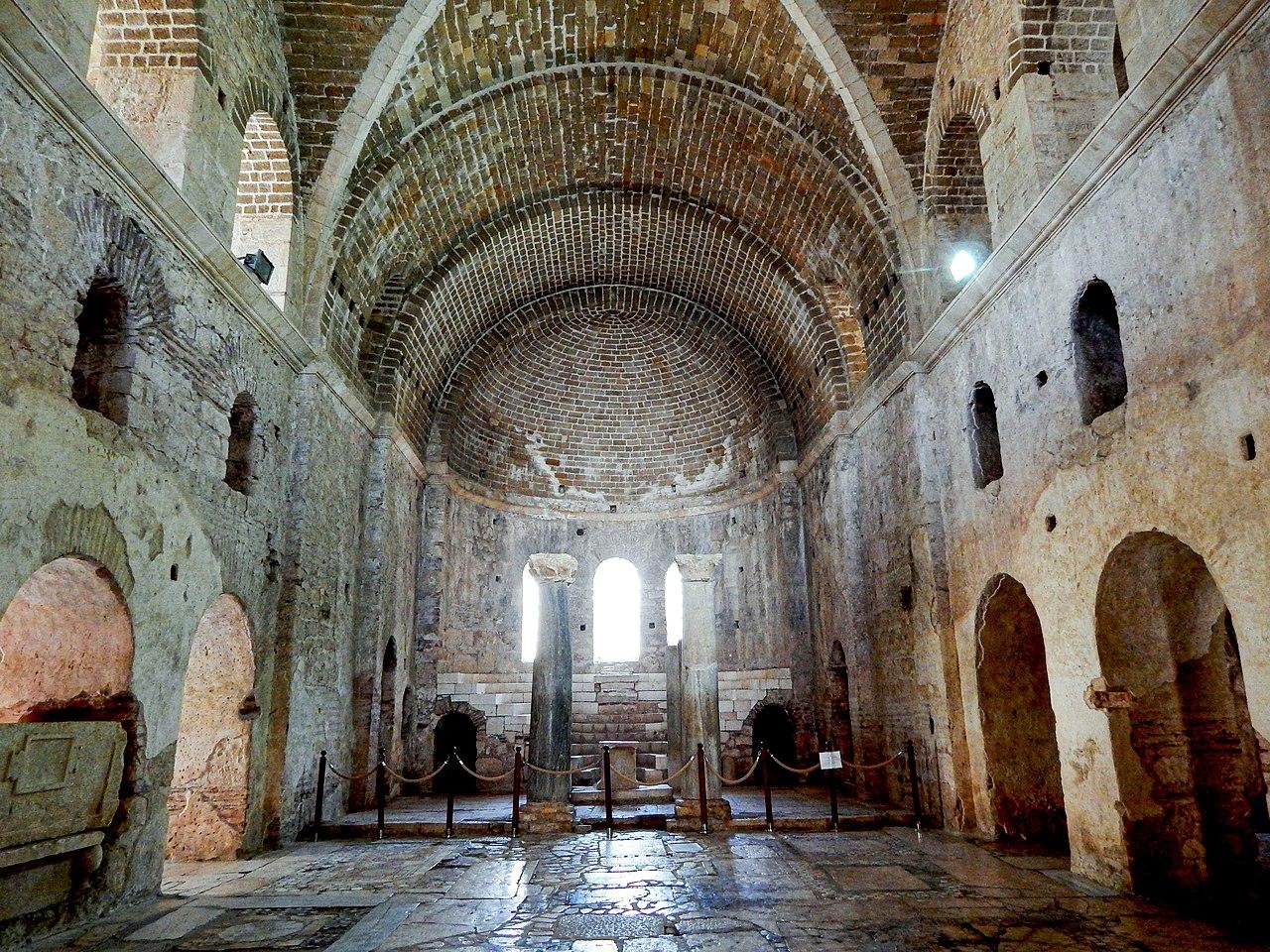Archaeologists have uncovered the burial site of Saint Nicholas, the historical figure who inspired the legend of Santa Claus, beneath a church in Turkey’s Antalya province.
 St. Nicholas Church. Credit: Sinan Şahin, CC BY 3.0
St. Nicholas Church. Credit: Sinan Şahin, CC BY 3.0
The St. Nicholas Church, constructed in the 7th or 8th century, was built atop an earlier church where Saint Nicholas is believed to have served as bishop before the site was submerged during the Middle Ages, according to the Demirören News Agency (DHA).
Professor Dr. Osman Eravşar, president of the Antalya Cultural Heritage Preservation Regional Board, described the discovery as “extremely important” and the first of its kind from that era. “
During the Roman Empire, Saint Nicholas was a Greek Christian bishop from the maritime city of Myra in Asia Minor. He became renowned for numerous miracles attributed to his intercession and for his extraordinary generosity, particularly his habit of secret gift-giving, which eventually inspired the modern-day traditions of Santa Claus and Sinterklaas.
 St. Nicholas, by Jaroslav Čermák (1831-1878). Credit: Galerie Art Praha via Wikimedia
St. Nicholas, by Jaroslav Čermák (1831-1878). Credit: Galerie Art Praha via Wikimedia
Saint Nicholas was interred in a 4th-century church in Antalya province. Centuries later, Byzantine Emperor Theodosius II ordered the construction of the St. Nicholas Church at the location where he had served as bishop. By the 11th century, his remains were relocated and enshrined as sacred relics in the Basilica di San Nicola in Bari, Southern Italy. During the First Crusade, Venetian sailors removed most of his remains and transported them to Venice, where they were housed in the San Nicolò al Lido monastery basilica.
In 1953, an examination of bone fragments from Bari and Venice revealed that the remains belonged to the same individual, though it remains uncertain whether they are definitively those of Saint Nicholas.
William Caraher, an archaeologist specializing in early Christian architecture at the University of North Dakota, noted to Live Science that it was “not unusual” for churches of that time to be built atop earlier structures. The discovery of Saint Nicholas’ burial site was made after the removal of a 1970s-era floor slab, revealing a 4th-century floor beneath it. Excavations uncovered the tomb and sarcophagus at the base of a fresco depicting Jesus, as well as the original church foundations and period mosaic flooring.
According to Eravşar, architectural features of the church, such as an unfinished dome, bear similarities to Jerusalem’s Church of the Holy Sepulchre, which strengthens the theory that the site was designed to link Saint Nicholas with the story of Jesus’ crucifixion and ascension. “His sarcophagus must have been placed in a special location—the section with three apses covered by a dome. There, we discovered a fresco showing Jesus holding a Bible in his left hand while making a sign of blessing with his right hand,” Eravşar explained. The team also uncovered a marble floor tile inscribed with the Greek words for “as grace,” which may mark the exact burial spot.
Eravşar stated that the site will now be protected and prepared for public display, offering visitors a chance to witness a significant piece of early Christian history.





